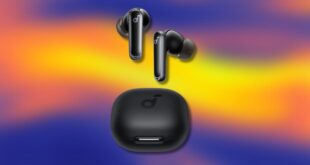CNET video producer Jon Gomez captures mattress expert Dillon Payne testing the edge support of a mattress.
Our nine experts have been testing mattresses and sleep accessories for years. We’ve seen it all and reviewed it all. To date, we’ve tested around 300 mattresses across the team. We take a holistic approach to mattress testing, which means that everyone is involved to ensure we represent all types of people. Our team has different heights, genders and body types.
Every bed that passes through our Reno testing facility undergoes extensive hands-on testing to rate and review key performance indicators.
Firmness
The Mattress Smasher 9000 testing a bed.
We rate the perceived firmness based on our entire team’s collective experience. It involves lying on the bed in different positions, sometimes for extended periods. We’ve had team members sleep on beds for a month up to multiple years.
In addition to testing it ourselves, we also use our proprietary Mattress Smasher 9000 to deliver objective firmness metrics. We always test a bed first before we get the MS9K, that way the objective data doesn’t cloud the subjective experience of sleeping on a mattress. That’s the thing about beds, while it’s essential to have objective numbers to compare, our subjective experience across the team is what helps us recommend beds to you.
Motion isolation
Testing the motion isolation with a glass of water on the end and flopping around. It passed.
Motion isolation is how well a mattress dampens movement across the surface of the bed. It’s essential for people sleeping with a partner, kids or pets. Traditionally, memory foam does the best job at motion isolation.
We have a few tests we put a bed through to assess motion isolation. First, I would lie on the bed and close my eyes. Then, a team member would move around next to me, with increasing levels of movement. We would do this in every sleeping position. The second test we use is setting a glass of water on the edge of the mattress and rolling toward it. The bed doesn’t have good motion isolation if the water sloshes or the glass tips over.
Edge support
Think of edge support as the strength of the bed’s perimeter. Most people might not think this is all that important, though if you tend to sleep on the edge of the mattress (like me) or have mobility issues, edge support is a big deal.
To test edge support, our team sits and lies on the edge of the bed and we note how much the bed gives. If I feel like we might fall off, the bed receives a poor edge support score. Traditionally, many memory foam mattresses rate lower in edge support, though it can happen across all bed types.
Temperature
A lot of brands will claim that their mattresses are cooling when they really aren’t. Here’s where our established industry knowledge comes in to help you decide what’s real and what’s just marketing. Including “cooling” technology, like special foams or covers, doesn’t mean that you’ll actually feel it.
Our testing rooms are all temperature-controlled, and we test beds without sheets or bedding to get as close to the real deal as possible. When we lie on each bed, we make sure we note if the bed is cooling and if we feel any of our body heat trapped while testing.
 meganwoolsey Home
meganwoolsey Home



